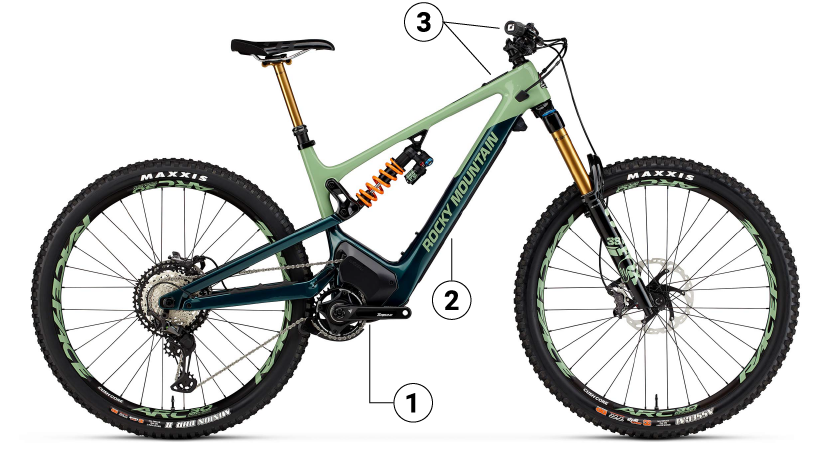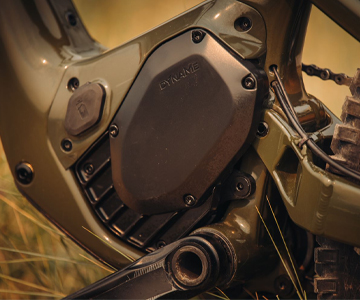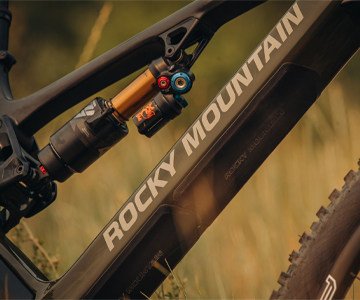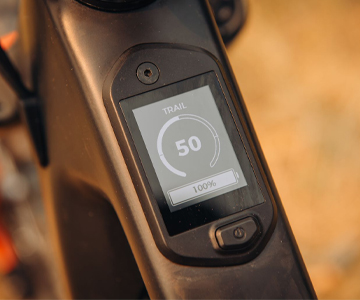
What is an E-Bike?
Electric bicycles, electric assist bikes, or E-bikes as they are most often referred to, are simply bicycles that also feature an electric motor and battery. Electric bikes can help you do more, and ride farther than your traditional pedal bicycle can. Not only that, but they are also a lot of fun to ride!
This guide will cover the benefits of E-bikes, the styles, and everything you need to know about choosing the right E-bike for you and how to care for it.
Benefits of Electric Bikes
1. Assistance with Pedaling and Reduced Effort: E-bikes provide electric assistance when pedaling, which can make riding easier, especially uphill or over long distances. This can encourage more people to use bicycles as a mode of transportation. With the electric assist, riders can pedal with less effort making it a more enjoyable experience, particularly for longer rides or when carrying heavy loads.
2. Faster Commutes: E-bikes can help riders travel faster than traditional bicycles, this can result in quicker commute times and reduced reliance on cars or public transportation. E-bikes make long bike commutes more enjoyable and much less sweaty than a traditional bike.
3. Improved Fitness: Although E-bikes provide pedal assistance, riders still get exercise from pedaling. This can lead to improved cardiovascular health, muscle strength, and overall fitness.
4. Environmentally Friendly: E-bikes produce zero emissions during operation, making them a more environmentally friendly mode of transportation compared to cars or motorcycles.
5. E-Bikes are fun: Did we mention how fun E-bikes are to ride? E-bikes are fun and easy to get out riding more! E-bikes help you get out for exercise, enjoy the outdoors, and put less strain on your body than a traditional bike.
What kind of E-Bikes are there?

Electric City Bikes
These e-bikes give you extra power you need to go farther, carry more, cut down on car trips, and have fun riding with friends. These bikes are set up for racks, fenders and some have integrated lights so you're ready to roll for city commutes.

Electric Cruisers
Electric cruisers offer a relaxed and enjoyable riding experience, combining the classic cruiser bike style with modern electric assistance. With comfortable seating, wide handlebars, and powerful motors, these bikes make it easy to travel longer distances effortlessly.

Electric Mountain Bikes
Electric mountain bikes give you the power to explore more trails and complete more laps than ever thought possible! You can power up climbs and be your own shuttle machine.
How do E-Bikes Work?
Electric bikes work by using an electric motor and battery to help you power your bike. The battery powers the motor, and you control the amount of power the system outputs using the controller. Pedal assist E-bikes provide electric assist that only kicks in when you are pedalling. The motor amplifies the power behind each of your pedal strokes, providing a natural riding feeling.
How Fast are E-Bikes?
Electric bike speed is dependent on the capability and construction of the motor, and maximum e-bike speeds are regulated by law. E-bikes in Canada are regulated to provide assistance up to 32 km/hr. You may still go faster than this for example when you ride the bike down a hill or if you put in more effort, but when climbing a hill, for example, the electric motor will only assist you up to 32 km/h.

Parts of an E-Bike

1. Motor
The main type of E-bike motors are hub motors and mid-drive motors. Hub motors are typically mounted in the rear wheel while mid-drive motors are located with the pedal cranks and bottom bracket. Mid-drive motors are more efficient, have a more natural feel while you're pedaling, and are easier to shift on hills.

2. Battery
Batteries are an important factor in determining your E-bikes range. The higher watt hour (wh) your battery is, the more potential you have to go farther. Batteries can be mounted in many places, but those mounted on the downtube or integrated into the bikes downtube provide the best centre of gravity.

3. Controls & Display
Controllers on your E-bike help control the settings. They can help you change the assist level, see your speed and distance, and check your battery levels. Some controllers have the capability to connect to your smartphone for additional features!
E-Bike Termonology
Torque
Torque refers to the rotational force that the motor applies to the bike's drivetrain to propel it forward. It's a crucial specification that determines the bike's ability to accelerate, climb hills, and carry heavier loads.
High torque in an E-bike motor means it can deliver more power to the wheels, which is particularly useful for uphill climbs or when accelerating quickly from a standstill. Torque is often measured in Newton-meters (Nm) and different E-bike motors will have different torque ratings.
For riders, understanding torque is important because it can significantly impact the bike's performance, especially in challenging terrain. Higher torque may offer power but may not feel as smooth as a lower torque E-bike.
Power
Power is what gets your E-bike motor moving and keeps it in motion. Electrical power is measured in watts (W), which is a single unit of electrical energy. Electric bike motors are legally limited to a maximum of 250W to remain classified as bicycles.
Battery Capacity
Battery capacity is measured with Watt-hours (Wh). The larger the battery capacity an E-bike uses, the farther and longer you can ride, but high-capacity E-bike batteries are also larger and heavier than lower-capacity batteries.
Battery capacity, or how much power a battery can hold, is calculated by multiplying amp-hours (a measurement of electrical capacity) with volts (the force pushing amps through the system) to get watt-hours (Wh). Watt-hours indicate a battery’s maximum capacity, which correlates with how long it can operate before it runs out of power.
Range
Range is how far your E-bike system can provide assistance before it runs out of battery. Many factors contribute to the total potential range of an E-bike, like riding surface, terrain, wind, cycling behavior, rider weight, and even tire pressure. Some E-bike systems equipped with smart technology can offer estimated range data on-the-fly to help you stay aware of how much assisted riding you have before you need to charge up, and many can also be paired with a range extender battery to help you go even farther.
Storing your E-Bike battery
How to clean your E-Bike
E-Bike battery life cycle
On average you can get 500-700 full charge cycles on a battery. The battery can be recharged at any time, so you always have full capacity available when you want it. Avoid fully draining the battery whenever possible. Charging a battery that is 50% full counts as one half of a charge. It is better to do more partial recharges than a full charge from 0% to 100%. After the battery has used its full cycles, the capacity and range will start to decrease. At that point you may want to consider a replacement battery.
E-Bike battery range
Range is affected by a number of factors:
